
Intel has pushed its mainstream platform beyond quad cores for the first time since it debuted the quad core consumer processor in 2007. The new hexa-core “Coffee Lake” processors for the mainstream platform require new motherboards on the Z370 chipset. The MSI Z370 Gaming Pro Carbon AC is the first of those new motherboards to go under the KitGuru microscope.

Intel's response to AMD's Ryzen and Threadripper has been great news for consumers. To effectively combat AMD Threadripper Intel rolled out a brand new High-End Desktop (HEDT) platform, X299, with up to 18 core Skylake-X CPUs. A sizeable leap over previous generation Haswell-E and Broadwell-E CPUs that had a maximum of 8 and 10 cores, respectively, on the X99 platform.
In response to AMD Ryzen, Intel has delivered another new platform, Z370, with “Coffee Lake” CPUs to succeed Kaby Lake and Z270. Technically Z370 uses an existing socket, LGA 1151, albeit in a slightly revised form to support CPUs beyond the quad core size. That subtle change is important because Z370 represents the first time Intel has increased the maximum core count on its mainstream platform since 2007.
In January 2007 Intel released the Q6600, the company's first quad core processor, for the LGA 775 platform. Here we are 10 year later to witness Intel raise the maximum core count to 6 for the mainstream. To the disillusionment of many enthusiasts Intel has rushed in the new Z370 platform with a socket that retains no backwards compatibility. To spell that out it means Coffee Lake CPUs will not work on Z270 or Z170 and Skylake or Kaby Lake CPUs will not work with Z370.
Coffee Lake and Z370 is, therefore, a significant upgrade for consumers since it requires a new CPU and motherboard at the same time. It does, perhaps, offer a more affordable upgrade path for those looking to go beyond quad-core without jumping onto the more pricey Intel HEDT platform. That said consumers looking for something more than quad-core now also have healthy competition from AMD to consider.
Motherboards like MSI's Z370 Gaming Pro Carbon AC are surprisingly similar to Z270 counterparts in terms of specification and price, the only point of significant variation being support for Coffee Lake 6-core CPUs. Intel says Z370 now has a 95W socket and supports 2666MHz DDR4 as standard, for reference Z270 was rated for 91W and 2400MHz. In practice, both support high-wattage CPUs with overclocking and both support high frequency memory beyond 4GHz.
MSI's Z370 Gaming Pro Carbon is an evolution of the Z270 Gaming Pro Carbon, while the AC variant we have adds a WiFi expansion card. MSI is starting at Z370 launch day with thirteen models, it currently has twenty or more Z270 motherboard products, for comparison.
It's a fairly high-end motherboard for MSI's Z370 portfolio sitting below, at launch, only the Z370 Godlike Gaming and Z370 Gaming M5. In MSI “Gaming” lingo its the top “Performance Gaming” model currently available. As a refresher MSI segments its products Arsenal, Performance and Enthusiast of which that represents good, better and best, respectively.
MSI loads the Z370 Gaming Pro Carbon AC with features like Realtek ALC1220 HQ audio, Intel Gigabit and AC WiFi, extensive RGB coverage and a potent 10-phase VRM. Let's go in-depth and see what else MSI's latest motherboard has to offer.
| MSI Z370 Gaming Pro Carbon AC | |
| Form Factor | ATX, 30.4cm x 24.3cm |
| CPU Socket | Intel LGA 1151 Version 2 |
| Chipset | Intel Z370 |
| Memory | DDR4, 4 DIMMs, up to 64GB, up to 4000MHz+ with OC |
| Onboard Graphics | Intel HD Graphics (supported CPUs) |
| Discrete Graphics | Up to 3-way CrossFire/Quad CrossFire, Up to 2-way SLI, Quad SLI |
| Expansion Slots | 3 x PCIe 3.0 X16 (16/0/4, 8/8/4) 3 x PCIe 3.0 X1 |
| Storage | 6 x SATA III 6Gbps 2 x M.2 PCIe 32Gbps or SATA III 6Gbps |
| USB | 2 x USB 3.1 (2 Rear, 1 Type-A and 1 Type-C, via ASM3142) 8 x USB 3.0 (4 Rear, 4 Front, via Z370) 6 x USB 2.0 (2 Rear, 4 Front, via Z370) |
| Networking | Intel I219V Gigabit LAN Intel Dual Band Wireless-AC 8265 |
| Audio | Realtek ALC1220 Codec 7.1 channel HD audio |
| Fan Headers | 6, all support 3/4 pin fans (1 CPU, 1 x W_PUMP, 4 x SYS) |
| Rear I/O | 1 x PS/2 keyboard/ mouse combo port 2 x USB 2.0 Type-A ports 1 x DisplayPort port 1 x USB 3.1 Gen2 Type-A port 1 x USB 3.1 Gen2 Type-C port 4 x USB 3.1 Gen1 Type-A ports 1 x HDMI port 1 x LAN (RJ45) port 5 x OFC audio jacks 1 x Optical S/PDIF OUT connector |
| UEFI | UEFI AMI, 1 x 128Mb |
MSI clearly denotes the Z370 Gaming Pro Carbon AC with its Performance Gaming segmentation. Feature highlights on the box include armoured PCIe and DRAM slots, an M.2 shield, add-in WiFi and RGB lighting, branded Mystic Light.
The accessory and documentation bundle includes the following items:
- WiFi Antenna installation guide
- User's manual
- Cable labels
- Driver and utility DVD
- Quick installation guide
- Registration insert
- SLI HB Bridge M
- USB 2.0 header extension cable
- I/O Shield
- Two SATA cables
- WiFi/Bluetooth PCIe card
- 2 x WiFi Antennae
- Screw for PCIe card
- Rainbow RGB LED Extension cable 80cm
- Corsair HD RGB LED cable 50cm
- 1 to 2 RGB LED Extension Y-cable 80cm
MSI's decision to include only two SATA cables seems unnecessarily thrifty and we're not sure if MSI's decision to tailor hardware to Corsair specifically is a good thing for the industry.
MSI's styling with the Z370 Gaming Pro Carbon AC is pleasant and neutral with an aesthetic focus on black with silver accenting. The “Carbon” in the name is reflected with some carbon-fibre-style inserts on the rear I/O shield and chipset heatsink.
The RGB lighting on MSI's board offers impressive coverage even if the brightness of the LEDs is a little on the feeble side. RGB lighting is configured on the rear I/O shield, chipset heatsink, audio PCB and in a strip along the right-hand edge of the motherboard (aligning to the 24 pin).
The block diagram is standard fare for a mid-range motherboard for Z270 and Z370. The CPU provides 16 lanes to two X16 PCIe 3.0 slots (16X/0X or 8X/8X) and the four memory channels, while the chipset effectively provides “everything else” including the third PCIe 16X slot (maximum bandwidth X4) and three PCIe 3.0 1X slots.
There is a fairly complex bandwidth sharing between the M.2 and PCIe that mean if you use dual M.2 ports as PCIe devices you are limited to four SATA ports. If you use only 1 PCIe M.2 device then all six SATA ports remain available.
MSI's Z370 Gaming Pro Carbon provides a good level of overall connectivity for the chipset. Compared to a cut-down or entry-level Z370 board you get USB 3.1, extra M.2, better quality networking and audio and more full-sized PCIe X16 slots with better bandwidth sharing.
MSI provides debug LEDs for the Z370 Gaming Pro Carbon AC but there's no code reader or onboard power/reset/clear CMOS buttons, such overclocking features are reserved for higher end motherboards. All the connectors seem to be slightly recessed in from the edge of the motherboard for some reason, perhaps because it inherits part of its core design from a different size motherboard.
Along the bottom of the motherboard are two of the six SATA ports strangely isolated from the other four which could make cable management tricky. There are two RGB ports located here – JRGB1 (5050, 12V) and JRAINBOW1 (WS2812B, 5V). The second 5050 (12V) RGB port sits next to the CPU EPS 8 pin and there's also another 5V RGB port specifically for Corsair products, JCORSAIR1.
In the audio area MSI provides Realtek ALC1220 audio as part of the Audio Boost 4 shielded package. MSI's audio components sit on an isolated PCB lit by an “RGB LED border”. Other audio features include de-pop protection, up to 600 ohms of headphone amplification (courtesy of Texas Instruments OP1562) and Chemicon audio capacitors (rated to 85 degrees Celsius).
The rear I/O is covered by:
- 1 x PS/2 keyboard/ mouse combo port
- 2 x USB 2.0 Type-A ports
- 1 x DisplayPort port
- 1 x USB 3.1 Gen2 Type-A port
- 1 x USB 3.1 Gen2 Type-C port
- 4 x USB 3.1 Gen1 Type-A ports
- 1 x HDMI port
- 1 x LAN (RJ45) port
- 5 x OFC audio jacks
- 1 x Optical S/PDIF OUT connector
There is no I/O mounted clear CMOS or BIOS flashback button, again such features are found higher up the MSI motherboard range. The WiFi is different in that MSI provides it via a PCIe add-in card rather than a solution that is embedded into the rear I/O. This means it is easy to take out if not required but similarly it means there are less PCIe ports available for other uses when populated.
Since MSI also has an identical SKU without the optional WiFi card there's probably an element of it saving MSI money too and that cost is passed onto the consumer with the “non-AC” version being slightly cheaper. If you buy the non-AC version there also won't be a strange gap in the I/O shield like may have occurred in the past.
That said most system builders will struggle to populate all PCIe slots these days when the quality of onboard networking and audio is so high, the fact MSI has put optional WiFi on a PCIe X1 card is therefore a non-issue.
Around the CPU socket MSI provides a mere 1 CPU fan and 1 PUMP header, a system fan header is close by but does not replicate the same level of control as the CPU fan header. Users with multiple CPU fans will have to set a manual profile on the system fan header to have it match the fan behaviour of the CPU fan header.
Power comes in through a single EPS 8 pin which is co-located with the second 12v G R B LED header.
The VRM setup is not too dissimilar to that of the Z270 Gaming Pro Carbon with 10 phases for the CPU socket area. We identified a uP9508Q 3+2 (VCore+VccGT) phase PWM controller which is likely being doubled by a nearby uP1961S – both units are provided by uPI Semiconductor.
There are 12 NTMFS4C024N and 10 NTMFS4C029N MOSFET units on the high- and low-side, respectively, closely located to the CPU power delivery system, both provided by ON Semiconductor.
Underneath the motherboard reveals standard cross-head screws to remove all heatsinks and shrouds for easy maintenance. Our particular sample was covered with a smeary paste underneath which we hope isn't standard fare for all units that roll off the production line, nonetheless it looks worse on the camera than it actually is.
If pictures on this page fail to display then disable your ad blocker as it can interfere with our gallery code.
MSI’s UEFI has remained relatively consistent across its range of high-end motherboards for Intel platforms for the last few years. The MSI Z370 Gaming Pro Carbon AC sports version 5 of MSI’s Click BIOS which launches into an EZ Mode splash screen with an option to head into the advanced mode with the press of F7.
EZ mode is designed for a quick and high-level overview of key choices like memory XMP, basic system diagnostic data and boot order.
Settings has a number of useful settings for booting and integrated peripherals. The Advanced entry has the most sub menus and options to play with including the ability to toggle various different compatibility modes for storage and USB devices.
The real substance of the BIOS for most users is found in the OC tab where frequency and voltage settings related to the CPU, DRAM and other System components is found. It is advisable to toggle the “OC Explore Mode” into Expert straight away since the Normal mode does hide some useful options.
The most important of those is the ability to pick how CPU voltage is applied, by enabling Expert mode you can pick from a number of voltage modes including Adaptive, Override, Offset, Adaptive + Offset or Override + Offset.
The range of LLC options is extensive too with Mode 1 (most aggressive) to Mode 8 (least aggressive) as well as an option for No overvolting, which is even less aggressive on the voltage than Mode 8. From our testing mode 2 will ensure an almost perfect voltage stability under load, mirroring the voltage specified in BIOS, while mode 3 isn’t far off either. The visual diagram MSI provides within the BIOS is useful in ascertaining the behaviour of each CPU LLC mode.
The Game Boost “overclocking button/dial” settings can be toggled from within the UEFI environment but this board doesn't get a physical switch. That said user's aren't missing a great deal since the overclock profiles are too aggressive in terms of voltage application and even most beginner overclockers can probably do better given an hour or less of online research.
M-Flash forces you to reboot to enter the flashing process is somewhat tedious though in practice all motherboard vendors will eventually reboot multiple times during the flashing process to apply the updates. However, you can’t view any of the M-Flash options or interface without conducting a reboot, whereas most vendors will at least allow you to navigate around in the interface, see what options are available to you and even start the flash, before a reboot is eventually required.
The OC Profile section hasn’t changed a great deal in successive generations, it still allows you to save OC profiles to blank slots, load in OC profiles from a USB stick or export them to a USB stick. It’s a useful capability that should facilitate sharing of decent OC profiles on forums and across the internet more generally.
The last two tiles of the MSI UEFI refer to visual tools. Board Explorer is a visual interface for seeing what is connected to the various sections of the motherboard and some information about those connected entities. Hardware Monitor has more practical use in that it’s the primary method of changing fan profiles within the UEFI environment for each of the six fan headers.
The fan controls are adequate for this motherboard allowing you to change the temperature source for each temperature-guided fan profile and the step up time between each of the adjustment thresholds. My only concern is that there isn’t an easily accessible set of fan profiles – there’s a default (auto-type) option or full speed. Some more traditional fan profiles like Quiet, Normal, Turbo and Full-Speed would be well founded.
Unlike some higher end boards there are only 2 temperature sensor monitors to draw from when setting fan controls, the MSI X299 Gaming M7 ACK, for example, has 7.
MSI has made a wise move for its software portfolio by introducing the MSI “App Manager”. It seems new to MSI's software portfolio and it is a sensible idea – have a single application that pulls together MSI’s wide range of optional motherboard utilities. Gigabyte has long done something similar with its “APP Center” software and now that MSI has joined in on the action we’d be surprised if ASRock and ASUS didn’t follow suit.
Command Center is the Windows performance tuning software for the MSI Z370 Gaming Pro Carbon AC with on-the-fly overclocking tools for the CPU, DRAM and iGPU, as well as fan controls. The virtual Game Boost button can also be toggled from within here but we find for the effort required users are better off doing some quick research to overclock their CPU since MSI has to overestimate the voltage to account for variations across all CPUs which usually results in considerably more voltage than is necessary being applied.
DPC Latency Tuner feels redundant since the majority, if not all, of the functionality is already embedded within Command Center. Any options or functionality that are unique to DPC Latency tuner should be embedded within the Command Center App to cut down on clutter. This is one of the utilities that you may want to omit.
Live Update 6 will keep itself, other MSI software and core motherboard drivers up to date on your behalf. It can be programmed to check for updates on schedule or only when asked by the user. It’s a fairly powerful tool for those who don’t have the time to manually check for updates themselves. MSI might benefit from baking the functionality of Live Update 6 into its App Manager to further reduce unnecessary software clutter.
RAMDisk is probably more useful on X299 where up to 128GB of RAM is supportable making RAM Disks of genuinely useful capacities possible. However, we were still able to test with a 4GB RAM Disk (leaving 28GB of system left over for “other things”. We did a quick test this time around of the subsequently created RAM drive (B:) and it delivered impressive speeds of around 14GB/s, for reference the fastest M.2 NVMe drives will do around 2.8GB/s.
X-Boost seems to be a new MSI utility which functions similarly to something like the ASUS EPU/TPU power & performance profiles. MSI offers five different profile presets (Game, Office, Home Theater, File Transfer, Video Editing) which adjust the priority given to one of five key areas (CPU Performance, Graphics Performance, Storage Performance, Audio or Power Consumption).
MSI has been bundling Nahimic software with its motherboards for a while now and it is really aimed at users who like to manipulate audio with after effects and processing. The Nahimic software is handy and has a number of tools to alter the audio or recording, there’s even an ASUS Sonic Radar alternative in the form of Nahimic Sound Tracker. Strangely enough we discovered that the third-party developers for MSI Nahimic and ASUS Sonic Studio are the same company – A-Volute.
The MSI Gaming App confuses things even more since it also has power & performance profiles in the form of OC Mode, Gaming Mode and Silent Mode. Gaming App used to make sense when it held the RGB lighting controls but now that’s in Mystic Light the Gaming App seems totally unnecessary for MSI motherboards, it’s still quite useful for MSI’s graphics cards.
MSI’s Gaming LAN Manager, as far as we can tell, is a repackaged cFos product that lets you enable packet prioritisation rules for software on the host system. It has a number of baked-in profiles for different usage scenarios including streaming, gaming and file sharing. Unlike the Killer DoubleShot Pro solutions there's no way of combining the LAN and WiFi on this motherboard.
MSI Mystic Light is the main LED controlling functionality for this motherboard. It's improved a lot since we tested it on X299 as you are able to access a wealth of additional lighting modes and colours by expanding out to the secondary window by selecting the “Setting” option under the Device Setting on the launch page.
However, even though the range of modes and colours is good we found the application to be buggy and after launching into the second window (Device Setting -> Setting) and returning to the home screen, it was not possible to get back into that second window (Device Setting -> Setting) in the same session without terminating the Mystic Light application and Service and restarting them both.
We will be outlining the MSI Z370 Gaming Pro Carbon AC motherboard's performance with the Intel Core i5 8600K CPU, 32GB of 3200MHz G.Skill Trident Z DDR4 memory and a Gigabyte GTX 1080 G1 Gaming.
Z370 Motherboard Test System:
- Processor: Intel Core i5 8600K (4.3GHz All-Core Turbo).
- Memory: 32GB (4x8GB) G.Skill Trident Z XMP (3200MHz 16-18-18-38 @ 1.35V).
- Graphics Card: Gigabyte GeForce GTX 1080 G1 Gaming.
- System Drive: Samsung 850 EVO 500GB SSD
- CPU Cooler: Corsair H100i V2 with Two ML120 Pro Fans.
- Power Supply: Seasonic Platinum 760W SS-760XP.
- Operating System: Windows 10 Pro 64-bit
Comparison Z370 Motherboards:
- ASUS ROG Strix Z370-E Gaming
- MSI Z370 Gaming Pro Carbon AC
Drivers and UEFI:
- Intel Chipset 10.1.1.44
- Nvidia GeForce 385.41 VGA drivers.
- MSI UEFI Version A11 (18/09/2017)
Tests:
- Cinebench R15 – All-core CPU benchmark (CPU)
- SiSoft Sandra 2017– Processor Arithmetic Test (CPU) and Memory Bandwidth Test (Memory)
- 7-Zip 16.04 x64 – Built-in 7-Zip benchmark test (CPU)
- AIDA64 Engineer 5.92 – System cache & memory benchmark and stress test (Memory and Power Consumption)
- 3DMark Time Spy v1.0 – Time Spy (1440p) test (Gaming)
- Ashes of the Singularity: Escalation – Built-in benchmark tool CPU-Focused test, 1920 x 1080, Extreme quality preset, DX12 mode (Gaming)
- Deus Ex: Mankind Divided – Built-in benchmark tool, 1920 x 1080, Ultra quality preset, DX12 mode (Gaming)
- ATTO 3.05 – M.2, USB 3.0, USB 3.1, and SATA 6Gbps transfer rates (Motherboard)
- Rightmark Audio Analyzer 6.4.1 – Record and playback test using a line-in to line-out loopback with a 3.5mm audio cable (Motherboard)
7-Zip
7-Zip is an open source Windows utility for manipulating archives. We measure the Total Rating performance using the built-in benchmark tool. The test stresses all CPU cores to 100% and shows an affinity for memory bandwidth.

Cinebench R15
Cinebench is an application which renders a photorealistic 3D scene to benchmark a computer’s rendering performance, on one CPU core, all CPU cores or using the GPU. We run the test using the all core CPU mode.

Sandra Processor Arithmetic
SiSoft Sandra 2017 is a multi-function utility program that supports remote analysis, benchmarking and diagnostic features for PCs, servers, mobile devices and networks. We run the application’s processor arithmetic test to gauge the CPU performance on each tested motherboard.

CPU performance is surprisingly potent with Intel's new 6-core i5 8600K. There may be no Hyper-Threading on offer with the i5 but the numbers still look good thanks to the extra two cores and high turbo frequency of 4.3GHz. There is minimal variation between motherboards on test too, which is what we'd expect to observe.
For reference previous Z270 motherboard reviews with the i7 7700K @ 4.5GHz all-core turbo (in a slightly different configuration, mind) scored around 1000 Score in Cinebench R15 and 152 GOPS in SiSoft Sandra CPU Arithmetic. Total “CPU Grunt” for this i5 8600K is therefore higher than the i7 7700K and that lead gets even bigger with overclocking considered.
AIDA64 Engineer
AIDA64 Engineer is a multi-featured software suite for diagnostics, stress testing, benchmarking, software auditing and various other measurement parameters. We use AIDA64 Engineer to benchmark memory throughput and latency.


Sandra Memory Bandwidth
SiSoft Sandra 2017 is a multi-function utility program that supports remote analysis, benchmarking and diagnostic features for PCs, servers, mobile devices and networks. We use the SiSoft Sandra memory bandwidth test to provide a set of memory bandwidth results.

Memory performance is about right for the frequency of the memory and the CPU, it differs insignificantly between the ASUS and MSI motherboards on test.
Similar Z270 memory testing, albeit with the i7 7700K @ 4.5GHz all-core Turbo, reaped about 41-49,000 MB/s across a range of motherboards in AIDA64 and 32 to 37 GB/s in SiSoft Sandra memory test. Latency appears to have gone up from 44-48ns but that could we be differences in the CPU frequency and Hyper-Threading related. Hence why legacy Z270 results have not been included in this graph for direct comparison.
3DMark
3DMark is a multi-platform hardware benchmark designed to test varying resolutions and detail levels of 3D gaming performance. We run the Windows platform test and in particular the Time Spy benchmark, which is indicative of high-end 1440p PC Gaming.

Ashes of the Singularity: Escalation
Ashes of the Singularity: Escalation is a Sci-Fi real-time strategy game built for the PC platform. The game includes a built-in benchmark tool and was one of the first available DirectX 12 benchmarks. We run the CPU-focused benchmark using DirectX 12, a 1080p resolution and the Extreme quality preset.

Deus Ex: Mankind Divided
Deus Ex: Mankind Divided is an action role-playing stealth video game released in August 2016. A built-in benchmark utility is included and we test using the Ultra quality preset and the DirectX 12 API at a 1080p resolution.

Gaming performance is consistent across the two Z370 motherboards on test which is always reassuring to see.
ATTO Disk Benchmark
The ATTO disk benchmark is a Windows-based utility for testing storage performance of any storage drive or controller. We use the default benchmark setup.
M.2 PCIe Performance
For M.2 testing we use a Toshiba OCZ RD400 256GB M.2 PCIe NVMe SSD.

M.2 performance continues to max out the drive, as with Z270, and MSI's M.2 Shield did a good job in keeping the SSD temperature out the throttle zone even after prolonged heavy loading.
USB Performance
We test USB 3.0 and 3.1 performance using a pair of Transcend SSD370S 512GB SSDs in RAID 0 connected to an Icy Box RD2253-U31 2-bay USB 3.1 enclosure powered by an ASMedia ASM1352R controller.


USB 3.0 and 3.1 performance is typical and revealed no anomalies, we saw similar numbers on Z270.
SATA 6Gbps Performance
For SATA 6Gbps testing we use an OCZ Trion 150 480GB SSD.
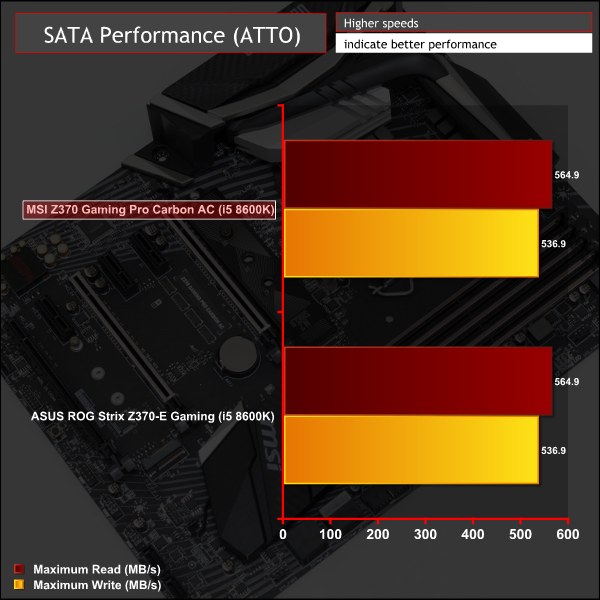
SATA, like USB, is eerily similar to Z270.
Audio
Rightmark Audio Analyser is a freeware benchmarking utility designed to objectively test the performance characteristics of audio solutions. We setup a line-in line-out loop and execute the record/playback test before generating the results report you see below. A sampling mode of 24-bit, 192 kHz is tested where available. If unavailable the closest alternative operating mode available is used and clearly marked.



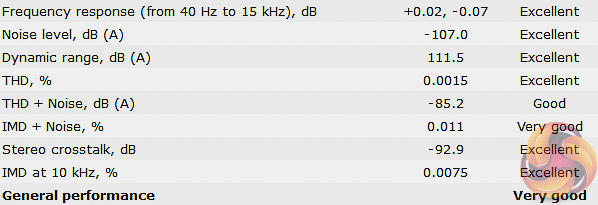
Audio performance is marked as Very Good overall with 6 Excellent, 1 Very Good and 1Good. MSI does well to squeeze every last drop of performance out of the Realtek ALC1220 codec, which has been a mainstay of Z270, X299, X370, X399 and other high-end motherboards for a while now.
Manual CPU Overclocking:
To test the MSI Z370 Gaming Pro Carbon AC motherboard’s CPU overclocking potential, we set the CPU VCore no higher than 1.3V and push for the highest stable clock speed. We maintain the DRAM frequency at 3200MHz to take memory stability out of the overclocking equation. Once the highest clock speed for 1.3V is achieved we see if there is potential to roll back on the voltage while maintaining system stability.
CPU overclocking results are impressive for the Coffee Lake CPUs on Intel's Z370 platform, 5 GHz is fairly easy to achieve with a good liquid AIO cooler like the H100i V2 on our test bench. For the purposes of making the results useful and realistic we decided to limit the voltage to something considered safe for normal 24/7 operation – 1.3 volts.
With that voltage limit in mind we pushed as far as we could and found that the system would boot into the desktop at 5.2GHz with 1.3 volts but was not stable under sustained load. At 5.1GHz it was fully stable though we found we could back off to 1.275 volts and it was still stable. Further backing off to 1.25 volts lead to instability so we settled on 5.1 GHz (51 x 100) on the i5 8600K with 1.275 volts, core voltage override mode and Auto Load Line Calibration.
Overclocked Performance

Overclocked performance is impressive with a 15 per cent boost to overall performance with a safe 24/7 voltage. This i5 8600K has 0.8GHz per core additional headroom even after being used at its maximum Turbo frequency (4.3GHz) for “stock” benchmarking.
Power
We leave the system to idle on the Windows 10 desktop for 5 minutes before taking a reading. For CPU load results we run AIDA64 CPU, FPU, Cache and Memory stress tests and take a reading after 5 minutes. The power consumption of our entire test system (at the wall) is shown in the chart.

Power consumption in terms of idle and load varies insignificantly between motherboards which suggests both are equivalently kitted out in terms of additional controllers, the efficiency of the VRM solutions and configuration of auto-voltage regulation. There's also a strikingly similar level of power consumption between Z370 with an i5 8600K and Z270 and an i7 7700K.
In name only is Intel's Z370 chipset a new platform. In reality motherboard vendors are re-releasing their Z270 models, locked to new Intel Coffee Lake CPUs, with any revisions and lessons learned based on media reviews and customer feedback from the Z270 generation. That means this launch wave of Z370 motherboards are surprisingly matured given their relatively “young age”.
MSI's Z370 Gaming Pro Carbon AC isn't identical to its Z270 predecessor but there isn't a great deal of difference between the models either. Like it's predecessor it shapes up to be a well-executed mid-range offering for Intel's new flagship chipset on the mainstream platform.
MSI has picked an optimal array of connectivity covering storage, USB and PCIe. Similarly, MSI kits the motherboard out well in terms of its VRM solution and the UEFI BIOS that accompanies that. The choice of audio and networking components is high quality and befits the price point of this motherboard. Most consumers not requiring WiFi would do well to ditch the AC SKU for the standard model and pocket the difference for something else.
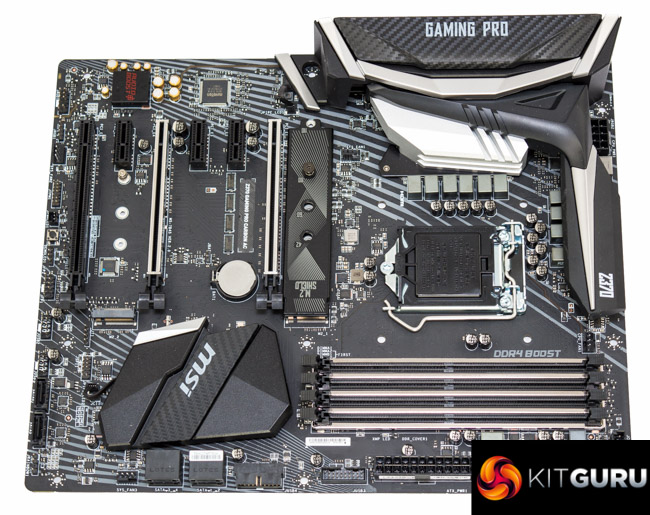
MSI still has some things to refine such as the Mystic Light software which suffers from some annoying bugs and the LEDs could do with being a bit brighter too, though the overall solution is still strong and fit for purpose. We'd have liked to see a second CPU fan header for a motherboard of this calibre, the Z270 Gaming Pro Carbon was exactly the same, but a system fan header can be used as a workaround.
This motherboard is light on overclocking specific features with no onboard power, reset or clear CMOS buttons. There's no code reader or dual BIOS but a debug LED system and a competent UEFI is enough to make the board easy to use for overclockers.
Z370 motherboards seem to be a tad more expensive than their Z270 counterparts at this launch, which isn't unusual for new products. The incentive to buy a Z370 platform motherboard is intricately linked to the appeal of Intel's Coffee Lake CPUs in the current DIY PC market. Intel's decision to lock this new chipset to Coffee Lake does little to open it up its appeal to a wider audience.
Nonetheless, Coffee Lake, particularly the 6-core unlocked i5, does offer a realistic alternative to the X299 (LGA2066) or X399 (TR4) platforms for users who want more than 4 cores but don't quite need all the other platform features that attract premium pricing and increased power consumption. Intel does, of course, still have AMD's 6- and 8-core Ryzen options to contend with – Ryzen offers more cores on a similar mainstream-level platform.
Making the assumption that a consumer has decided on Intel Coffee Lake CPUs and the Z370 platform after weighing up the relative merits of all viable alternatives (Ryzen, Threadripper, Skylake-X, Kaby Lake-X, Kaby Lake), then MSI's Z370 Gaming Pro Carbon (AC or not) is a suitably refined foundation for that system.
MSI's Z370 Gaming Pro Carbon AC has a suggested retail price (SRP) of £189.99 in the UK and is sold with a 3 year warranty as standard.
Pros:
- Optimal blend of connectivity for the platform
- Pleasing RGB lighting and functionality
- M.2 shield is effective
- Highly functional UEFI with good overclocking options
- Attractive neutral aesthetics
- High Quality Realtek ALC1220 audio
- PCIe and DDR4 slot shielding
Cons:
- Light on overclocking specific features
- Extra CPU fan header would be ideal
- Unnecessary software still an issue
- Intel Z370 is locked to Coffee Lake CPUs only
KitGuru says: A solid foundation for any Coffee Lake CPU, MSI's Z370 Gaming Pro Carbon AC is a refined and well-rounded Z370 option.
 KitGuru KitGuru.net – Tech News | Hardware News | Hardware Reviews | IOS | Mobile | Gaming | Graphics Cards
KitGuru KitGuru.net – Tech News | Hardware News | Hardware Reviews | IOS | Mobile | Gaming | Graphics Cards







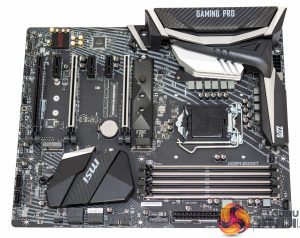








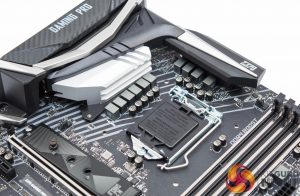

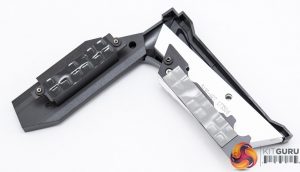

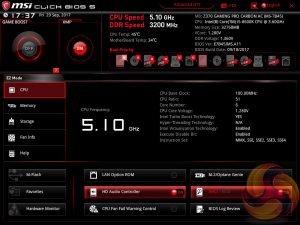

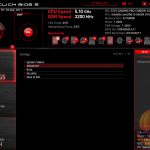




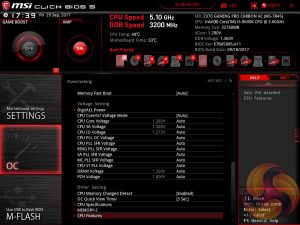
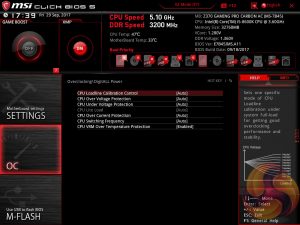




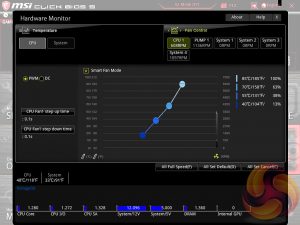

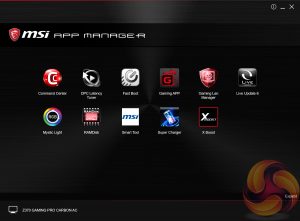



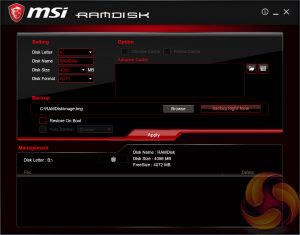


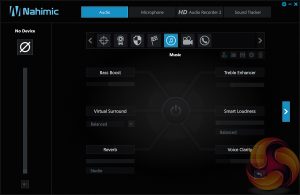








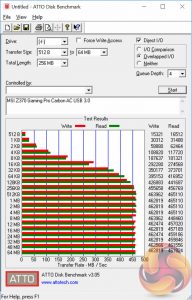






Hi guys,
Indeed, this mobo gave you a nice results with this cpu.
But is it worth to buy it in combination with 8700K or maybe target some other model (of mobo) to get best results?